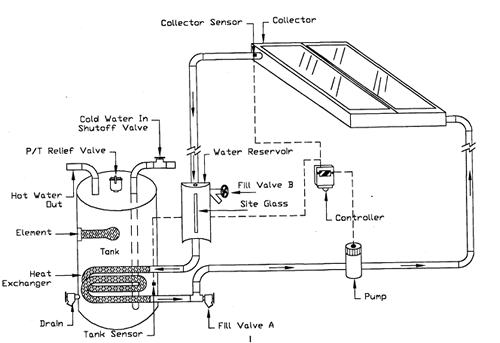The drainback system was first introduced in a large scale back in
the 1980’s. They have been proven very reliable and are more efficient
than the indirect glycol system. This is a non-pressurized closed loop
system using water as the heat transfer fluid. A small drainback reservoir
is installed in the collector loop. When this system is filled with
water it is only filled to the top of reservoir. Since it is located
below the collectors, they remain dry when the pump is not circulating.
When the collectors are hotter than the water in storage, the pump circulates
the water in the reservoir through the collectors where it is heated.
The heat from this water is then transferred to the solar storage tank
through a heat exchanger located either in the storage tank or drainback
reservoir. When the collectors approach the same temperature as the
water in the storage tank or this water has reached a preset temperature,
the pump shuts off and all the water drains back the reservoir. The
drainback system eliminates all the problems inherent in the other types
of systems. First, freeze protection is based on gravity. Second, the
pump is shut off when the storage tank reaches its high limit setting
and all water is drained from the collectors. And finally, the problems
encountered in the collectors in hard water areas are eliminated. The
drainback system also uses fewer components than any of the other types
of active system, thus the potential of component failure is drastically
reduced. Figure 3 depicts a typical drainback system.
